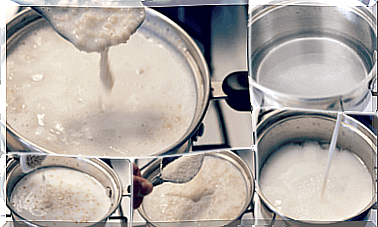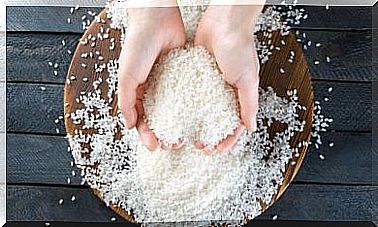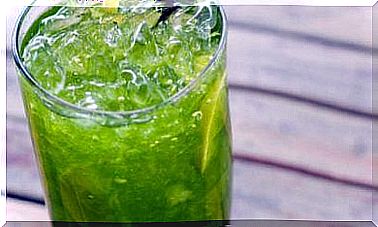3 Natural Soaps You Can Make At Home
If you like natural products, you should definitely try these soaps. You can easily make these great soaps yourself in just a few steps.
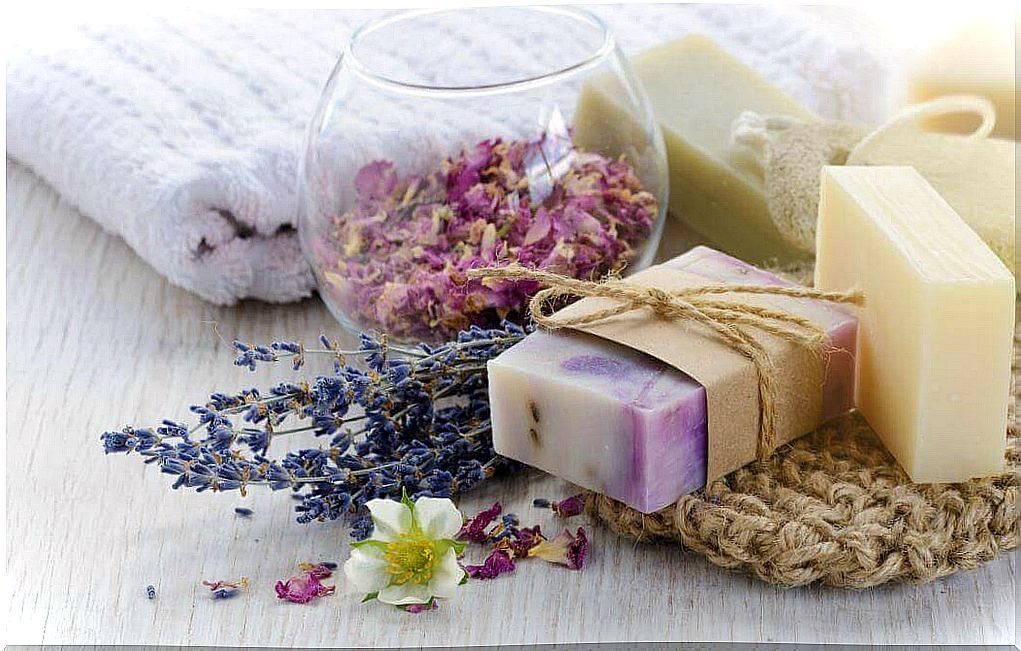
Natural soaps that you can make yourself have become increasingly popular recently. Made from herbal extracts, oils, and vegetable and animal fats, they have many health benefits.
The properties of the soaps vary depending on the ingredients you use. For example, some can be very stimulating, while others are more relaxing.
Here’s how to make natural soaps at home.
Natural soaps and their benefits
The biggest difference between homemade natural soaps and industrially manufactured soaps is the way they are made. Many synthetic substances are added to man-made soaps, as are most of the cosmetic products we use.
It looks completely different when we make them from natural ingredients. In the following article we will show you how good natural soaps are compared to industrial products:
- They contain glycerine: Glycerine is a very valuable ingredient for skin and hair because it provides moisture. It is a by-product that arises from the production of biodiesel or the saponification of oils.
- They don’t contain any chemical ingredients: these are generally added to make the soaps lather more or smell better. However, they can also trigger allergies and cause skin irritation.
- We can adapt them to our needs: depending on what skin problem we have or what soap we are looking for, we can add ingredients. There is a wide choice and each has different therapeutic properties.
- We can be sure that we are using high quality products because we do not pollute the environment with artificial products.
Natural do-it-yourself soaps
1. Soap for acne

If you are looking for effective acne ingredients, you should choose one of the following:
- Clay
- thyme
- Turmeric.
- Biological sulfur
- Golden rose
Here we describe how to make thyme acne soap.
Ingredients and utensils
- Dye (as desired)
- Dried thyme
- thermometer
- olive oil
- Caustic soda
- Coconut oil
- Rectangular form
- water
- almond oil
- Thyme essential oil
- Gloves, glasses and protective mask
method
- Mix water and lye in a resistant container. A chemical reaction takes place during which the mixture becomes hot. Protect yourself with gloves, glasses and a protective mask, because the mixture is corrosive to the skin!
- Heat the oils in a saucepan to around 40 ° C.
- Once the liquor has cooled to around 40-50 ° C, stir it into the oil mixture. It’s best to use a hand blender, but be careful not to let the mixture splash. As soon as it’s about the consistency of mayonnaise, you can add the thyme oil and, if desired, a coloring agent.
- Pour into the tin and decorate with thyme. Cover and let dry for 1 to 3 days.
- Then remove from the mold, cut and store for 30 to 40 days so that saponification can take place.
2. Natural soaps made from olive oil
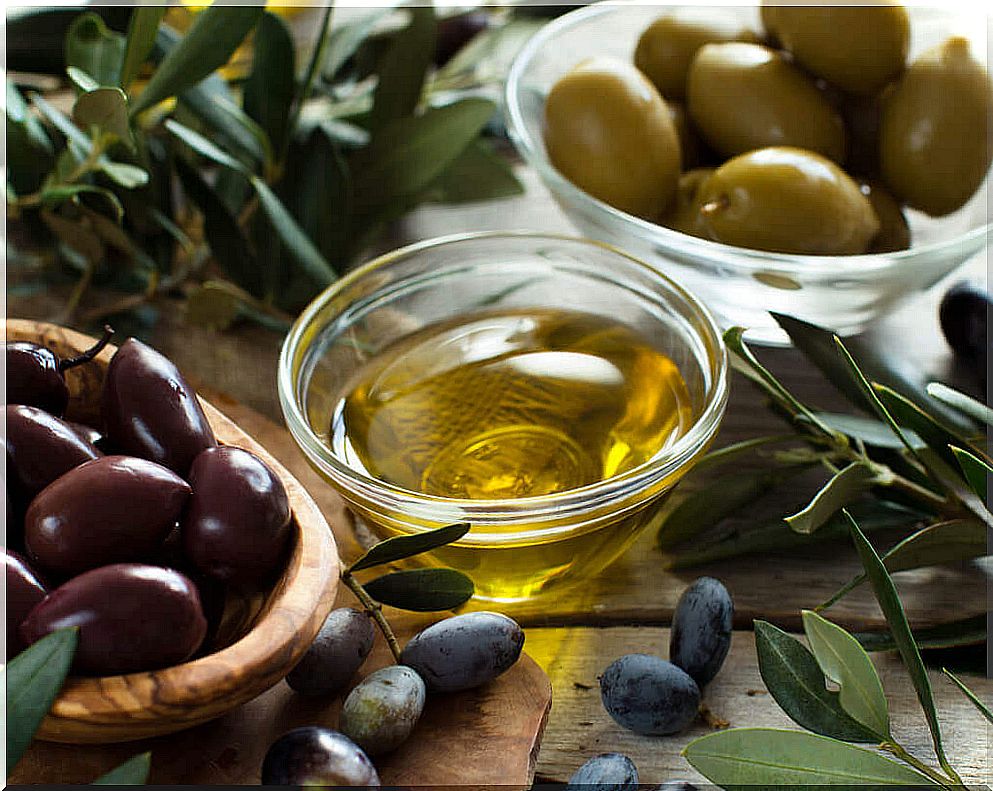
A soap with olive oil protects the skin from external factors, as it can regulate the water-fat balance.
ingredients
- 1 liter of virgin olive oil
- 300 milliliters of water (1.5 cups)
- 125 grams of caustic soda (1/2 cup)
method
- Mix caustic soda and water carefully and let cool down a little. Be careful not to burn yourself in the process.
- Then heat the oil in a saucepan until it reaches about 40ºC.
- Mix the lye with the oil. Use a hand blender to do this.
- Once the mixture becomes creamy, you can add the herbs or essential oils of your choice.
- Give in forms. Remove from the mold after 2-3 days and wait at least 4 weeks before using the soap.
3. Natural soaps with green tea

Not only does green tea have many health benefits, it can also be used to make soaps. What are its properties exactly? It provides moisture and has an antioxidant effect.
Ingredients and utensils
- 450 grams of coconut oil (3.5 cups)
- 80 grams of olive oil (8 spoons)
- 300 grams of shea butter (2.5 cups)
- 125 grams of caustic soda (1/2 cup)
- 320 milliliters of water (1.5 glasses)
- 30 grams of green tea or camellia oil (3 spoons)
- 10 grams of powdered green tea (1 spoon)
- Green tea flavor (as you like)
- shape
method
- Carefully mix the lye and water as described above.
- While this mixture is cooling, melt the shea butter and coconut oil in a saucepan. Add the olive oil and remove the mixture from the heat.
- Weigh 30 grams of green tea oil and 10 grams of powdered green tea and save for last.
- Mix the lye mixture with the oil. Use a hand blender to do this.
- As soon as the mixture is as creamy as mayonnaise, add the green tea and green tea oil and stir everything well. Also add the essential aroma of your choice.
- Pour into the mold and sprinkle the green tea powder on top. Let it dry for 24 hours and then remove it from the mold.
- Then cut into small pieces and let saponify for 4 weeks.
Don’t forget to make the soap in a well-ventilated room to prevent gas hazards. Also observe all safety measures so as not to damage your skin!
In a short time you can easily make natural soap that cares for your skin and supplies it with moisture.

